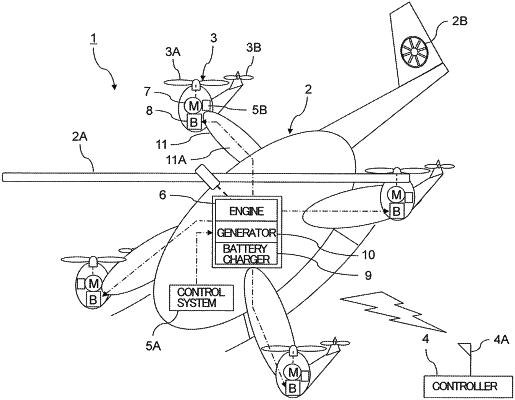| CPC B60L 50/60 (2019.02) [B60L 53/50 (2019.02); B64C 27/28 (2013.01); B64C 37/02 (2013.01); B64C 39/024 (2013.01); B60L 2200/10 (2013.01); B64U 10/10 (2023.01); B64U 50/19 (2023.01); B64U 50/34 (2023.01)] | 12 Claims |

|
1. A method of controlling a rotorcraft,
wherein the rotorcraft comprises:
a first rotorcraft having a first main rotor and a first tail rotor; and
at least one second rotorcraft having a second main rotor and a second tail rotor, the at least one second rotorcraft being attachable and detachable to and from the first rotorcraft,
wherein the second main rotor of the at least one second rotorcraft rotates electrically,
wherein the at least one second rotorcraft includes a battery providing power to the second main rotor to electrically rotate the second main rotor,
wherein the first rotorcraft has at least one of a charger and a generator, wherein, during a period of when the at least one second rotorcraft is attached to the first rotorcraft while flying, the at least one of the charger and the generator of the first rotorcraft charges the battery of the at least one second rotorcraft to allow the battery to provide the power to the second main rotor of the at least one second rotorcraft, and
wherein the method comprises:
flying the first rotorcraft, to which the at least one second rotorcraft is attached, to a destination;
separating the at least one second rotorcraft from the first rotorcraft at the destination; and halting the rotation of the second main rotor until the at least one second rotorcraft is separated from the first rotorcraft, unless a condition in which a lift force should be increased is satisfied.
|